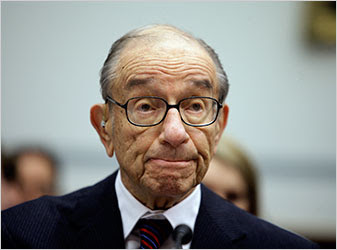Today Rick Hornik (who clearly knows me well) sent me a link to this interview of the authors of the theory of the Gutenberg Parenthesis. The theory posits that the age of print brought with it certain cultural anomalies which we now consider to be truisms and norms, but which are actually being called into question in the digital age, on a trajectory that is leading us back where we started before Johannes began puttering with movable type.
Reading the piece was great fun because I really like thinking about how wide, sweeping cultural trends ebb and flow, particularly those around orality and literacy, print and digital, and the ways that culture deals with information as a thing.
I did think the theory reductionist, though, in its classification of everything as either inside the parenthesis or outside of it. Reductive thinking can be powerful because it allows us to make connections and see patterns, but here are a few reasons it’s dangerous in this case:
-
We’re not just going in circles. Whether or not the internet is more medieval than the age of print, it’s not that we’re returning whole hog to the days of Chaucer. These guys talk about coming full circle; I think of the world in more Siddharthan (Buddhist?) terms as a spiral. We may be back in the same place in the circle, but we’ve moved up the helix: we are somewhere new. The danger of overlooking this is that we won’t recognize that while certain things are back again (a networked world, a world with messy authorship), some of today’s conditions are very different (the cloud, global brand recognition, a stock market, pharmaceutical companies’ in-house IP lawyers). For example, oral cultures were highly conservative because they dedicated their cultural muscle to remembering important things; literacy liberated the cultural mind to turn to more innovative activities; now with all of our information stored and immediately accessible, instead of returning to the old ways, we could get even more innovative as a society. (Walter J. Ong does a good job of capturing the sense of both returning to a preliterate culture and growing even more literate in the digital age in his classic Orality and Literacy). Finally, while it’s effectively jarring to call the print era merely a parenthesis, it’s misleading, because though it’s true that it’s just a temporary hiccup in time, it implies that other eras aren’t also temporary hiccups.
-
It’s not just medieval. Each of the periods we’re talking about here was internally differentiated. It’s become something of a cliché to talk about today’s world of the internet and ebooks as analogous to Gutenberg’s first days of print, but there’s meat to that comparison. The early days of print typography were a (fabulous) mess and they were about replicating what came before (handwritten manuscripts); the early days of the internet typography were a (fabulous) mess and they were about replicating what came before (printed [news]papers and books). Later, highly normalized days of print will perhaps be analagous to later days of the web, and they’ll be very different than what we have going on now, just as what we have going on now is very different than, say, 1998. If we are entering a medievalesque period now, that’s not to say that the internet always was or always will be medieval. And not all preliterate culture was medieval–that was only the last cultural era before Gutenberg came along. If you go much before 800 AD, you’re running into a very different society altogether. Maybe I’m just quibbling with the conflation of “preliterate” with “medieval.”
-
Value-laden language. You can’t escape this stuff, but it’s like we’re either judging the medievals (the Dark Ages!) or, in this piece, we’re judging the print era (lousy containers with their static content–let’s have a “restoration”!). I do admit that I enjoyed reading about a positive account of the medieval period for a change, however.
Digging into what made the medieval information culture tick was indeed the best part of the piece. I hadn’t thought of that medieval world as highly “networked,” specifically because it was so hierarchical and I think of networks as more democratic. But the part about how oral culture messes with authorship and how that’s similar to the way content operates on the web is very resonant. Certainly to some degree when copyright law came into being in the early 18th century it was in reaction to the rising needs of print culture; what this theory and this interview does well is to question whether that law is actually the obvious right thing or whether now we’ll need to grow out of it again.
But this is where the discussion comes in of whether we’re just traveling in circles or if there’s something linear and progressive about our cultural development as well. Our modern economy depends on granting rights to the creator of intellectual property, and not just in the media world: so are we moving to a place where all that will need to change? And if so is the pendulum indeed simply swinging back the other way, such that in a thousand years we’ll be building cathedrals again, instead of bazaars? Or will we find a new (and also temporary and parenthetical) Hegelian synthesis between the capitalist need to assign ownership and our increasingly dynamic network of living content?
